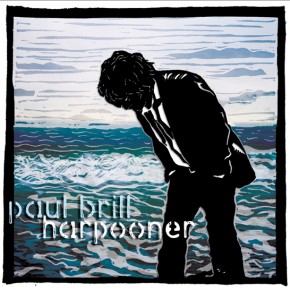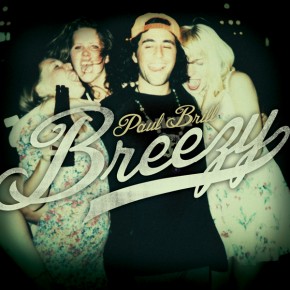 Album: New Pagan Love Song
Album: New Pagan Love Song
By Sam Ubl
Engaging piano pop balladry is a commodity rendered rare through excess. Considering the morass of feckless singer/songwriters, quality artists are like exotic treasures and their presence has been so marginalized that fans often lack the know-how to separate the grist from the mill. Some artists thrive on winsome personalities, cunningly distracting listeners from the music with their stylistic excess. They stand out like TV antennae in an electric storm, inviting critical rejection and the inevitable backlash of the fickle scenesters who often comprise their fanbase.
A demure opus that serves as a testament to the enduring potency of classical pop songwriting… virulently catchy…
But if the Ben Kwellers of the genre take the easy route to notoriety in an overpopulated field, where does that leave the Paul Brills? Brill is a harmless bloke– too good to be dragged down by his loudmouth peers and too modest to do anything about it. New Pagan Love Song is the New York-native’s third fulllength effort, but to most listeners it will serve as his introduction
.
Coy artists such as Brill often suffer from the attention-grabbing exploits of their lesser contemporaries. But then, that’s their choice. As a member of the San Francisco-based Envelope, he endured the tension of a major-label bidding war, which wore on the band and ultimately led to their dissolution. In the years since, he’s helmed a formidable if not yet widely recognized solo career. For New Pagan Love Song, Brill also took the roles of producer and engineer, affording himself increased creative freedom. The result is a demure opus that serves as a testament to the enduring potency of classical pop songwriting. The album is like a montage of matchbook paintings, full of small treasures that by blinking you may risk missing.
The album shows a consistent affinity for time-tested techniques, but Brill isn’t afraid to capitalize on the expanded palette afforded by modern technology, dipping in electronic affectations that allow his abundant creativity to flourish. The liner notes even boast a “glitch guru,” Michael McKnight, who doubtless played a key role in making the stuttered beats. On the virulently-catchy “Comeback Kid”, a Yankee Hotel Foxtrot -style blend of electro-acoustic kitchen sink percussion pilots a bucolic array of instruments that includes banjo and pedal steel, while the saucy “Lay Down Your Weary Head” smacks of Portishead with its shuffling downtempo drumbeat and snappy upright bass groove.
Brill’s sound owes to a diverse set of forebears, but the composite typically falls somewhere between Elliott Smith and Grandaddy– influences he flaunts loudly on “Everything I Believe In”.
There, Brill sounds a lot like Grandaddy’s Jason Lytle, delivers a wrenching vocal performance that he drapes gently and plaintively over a glitchy piano-based waltz. Hardly overwhelmed by its digital apparel, the song thrives on the sort of classical restraint that lent Smith’s songs timelessness. On “Weekday Bender” there are strains of Brendan Benson or Fountains of Wayne, while tracks like “Daylight Scars” and “Desert Song” reveal Brill’s fondness for electro-pop architects such as Lali Puna and Juana Molina.
New Pagan Love Song also carries a loose story line, tracing a confused, presumably amnesiac character through several episodes. For the most part, Brill’s storytelling is simplistic, and it offers enough ambiguity to foster multiple interpretations. But while understated to the point of being almost inconsequential, the lyrical content only impedes Brill’s defiantly traditionalist vibe. And as a result, New Pagan Love Song is a quiet accomplishment but an accomplishment nonetheless.
 Album: Harpooner
Album: Harpooner
 “The Sun Will Come Up”
“The Sun Will Come Up”